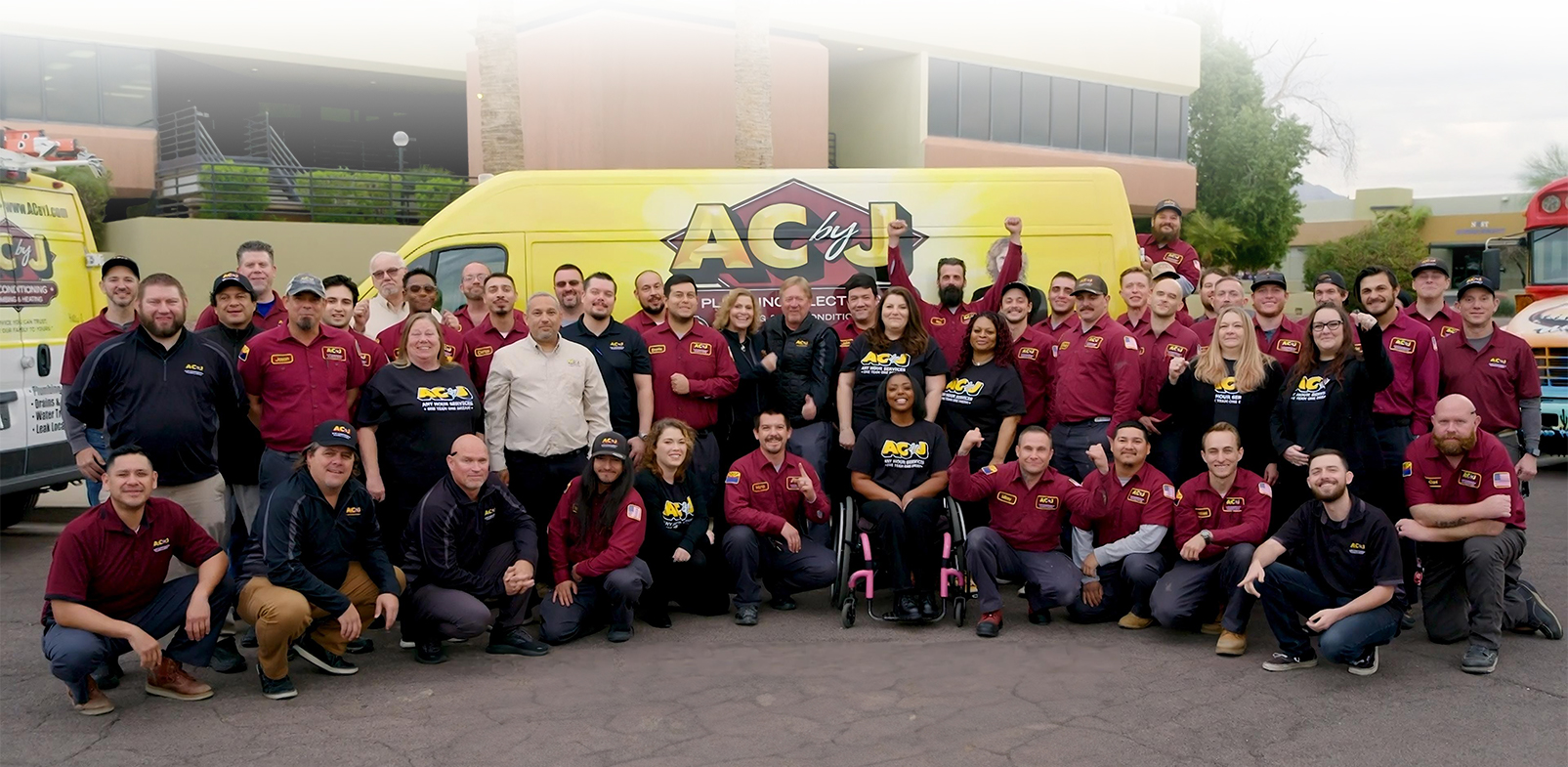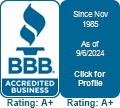If you have a home with a basement, you depend on your sump pump to protect your home from excess rainwater. Even though we get much less annual rainfall in Arizona than in many other parts of the country, we’re definitely no stranger to seasonal weather extremes. That’s why it’s so important for Maricopa County residents to make sure that our basement sump pumps are in working order so that they’ll be ready when we need them. If your home has issues with basement wall construction or is located in an area with soil that drains poorly, your sump pump is an important line of defense against the exorbitant repair and cleanup costs resulting from basement water damage.
There aren’t too many things worse than a flooded basement, but our team at AC by J is here to help! If you have any questions about sump pump maintenance in Scottsdale, Arizona, contact our team of HVAC and plumbing specialists at any time. Here’s a look at what you need to know about proper annual sump pump maintenance.
What’s Involved in Annual Sump Pump Maintenance?
Most sump pumps spend long periods of time idle, and that’s definitely the case in our dry climate here in Scottsdale. That’s why it’s so important to check out your pump and make sure that it’s in proper working order on a regular basis. The pump is hidden away in the basin or on the basement floor and only operates intermittently. The other problem is that a defective sump pump typically won’t show any problems until it’s too late. That’s why it’s important to perform routine sump pump maintenance at least quarterly and schedule professional preventive maintenance on an annual basis.
Quarterly Sump Pump Maintenance
Your quarterly maintenance tasks are pretty easy and don’t require any special tools. All you have to do to get started is to unplug the pump and empty the basin of any standing water. You’ll want to remove any debris that has collected in the sump and make sure that the sump pump inlet screen is clear and free from any dirt or obstructions. Then, you just need to plug in the pump and make sure that the float switch is working. Pour in at least five gallons of water into the sump, or as much as you need to float the switch. Once you’ve confirmed that the switch turns the pump on and off properly, all you have to do is clean up and repeat the procedure every three months.
Annual Professional Sump Pump Maintenance
Annual sump pump maintenance includes all of the same procedures as your quarterly maintenance as well as a more detailed look at the pump and its components and preventive maintenance. Even if you’re confident in your DIY abilities, there’s no substitute for professional service. The annual maintenance is a pretty quick and straightforward procedure, and the modest expense of a service call will ensure that the procedure is done quickly and correctly.
Sump Basin Maintenance
Your sump basin needs to be at least 24 inches deep and 18 inches wide for the sump pump to work properly. The first step will be to make sure that the pit is still clear and free of blockages. When a home settles, it can often create cracks and shifts in your foundation and basement floors. If this adversely affects your sump basin, it’s to your advantage to locate and resolve this issue ahead of time. We’ll also make sure that your basin’s removable cover fits properly to help prevent water in the basin from evaporating and creating moisture problems in your basement. If your basin cover doesn’t fit properly or needs to be replaced, we’ll take care of that on your service visit.
Motor Maintenance
We’ll remove the pump from the basin so that we can give it a detailed evaluation from top to bottom. We’ll examine the system components for rust or corrosion, and we’ll deep clean the pump inlet screen. If your pump has sealed bearings, it will not require lubrication, but if you have a sump pump that requires lubrication, we’ll take care of that during your service appointment.
Once we’ve cleaned and serviced the pump, we’ll reinstall it and plug it back into the power outlet. We’ll confirm that your battery backup is also ready and in working condition. If your basement is flooded, there is a good chance that the weather outside is rough enough to create power outages. Your battery backup is a redundant measure to ensure you’re prepared for a natural disaster. Some sump pumps also have alarms to alert homeowners of water buildup in the pit. If your sump pump has an alarm, we’ll confirm that it functions properly.
We’ll test out your sump pump’s float switch and make sure that it moves all the way through its range of travel without getting stuck and that it turns the pump on and off at the proper time. The float switch operates in the same fashion as the float in your toilet, and you’re probably familiar with the inconvenience of having one that won’t shut off.
Sump pumps will usually have a cord long enough to reach the nearest ground fault circuit interrupter (GFCI) outlet. You should never plug your sump pump into a non-GFCI outlet, and you should not use an extension cord to plug in your pump unless it meets the requirements specified by the pump manufacturer. You can find this information in your manual, and it will often also be stamped on the pump motor housing. We’ll make sure your pump’s power source and electrical systems are connected safely.
Discharge Pipe Maintenance
The pump motor is connected to a discharge line known as an effluent which connects to a designated drainage area. The effluent directs rainwater away from the home so that it can’t cause water or structural damage. If the effluent discharge is too close to the home, then you run the risk of the rainwater seeping back into the sump. It’s also important that the effluent line runs clear and remains free of any deposits or blockage.
The sump pump is equipped with valves that can sense rising water levels or increases in water pressure in the sump basin. As the water starts to rise, the sump pump will automatically turn on to pump out the excess rainwater. You should also have a functioning check valve installed on your discharge pipe to prevent backflow from water remaining in the discharge pipe after the pump turns off.
We’ll finish out our service call by checking the condition of your pump discharge pipe. We’ll make sure that it’s not obstructed by dirt or roots and that it’s draining fully. The discharge should be at least 20 feet away from the home and shouldn’t drain into the neighboring properties or into the public sewer systems. If water sits in your effluent without draining, it can freeze up or accumulate mold or bacteria. We’ll make sure that the pipe is clear and let you know if we see any potential future problems with structural settling or vegetation that could affect your sump pump’s proper operation.
AC by J has been providing premium quality plumbing and HVAC services in Scottsdale and Maricopa County since 1983. We offer the full range and scope of services, including highly affordable maintenance agreements, and our commitment to customer service is second to none. For more information, or to schedule professional sump pump maintenance in Scottsdale, AZ contact AC by J today!






